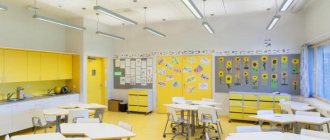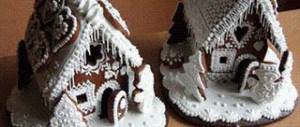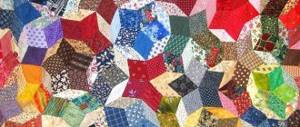Family budget presentation for a technology lesson (8th grade) on the topic
Slide 1
Family budget. Revenue and expenditure parts of the budget Completed by: Tatyana Nogovitsina, Natalya Nogovitsina – 8th grade Teacher: A.V. Vershinina
Slide 2
Review What is a need? What types of needs do you know? What is the name of this pyramid?
Slide 3
Family budget The financial situation of the family and the state of its finances are characterized by the family budget, which shows the size and balance of all income and expenses of the family. Budget is a French word, its literal translation is money purse
Slide 4
FAMILY BUDGET A family budget is a financial plan, which is a list of income and expense items with established restrictions for a certain period in the future (week, month, year), a balance of family expenses and income. In other words, these are the proportionate amounts of family income and expenses.
Slide 5
Balance Balance (French balance, literally - scales, from Latin bilanx - having two weighing bowls), 1) equilibrium, balancing. 2) A system of indicators that characterize the ratio or balance in any constantly changing phenomenon.
Slide 6
INCOME Income is money or material assets received from a business, individual or any type of activity. All funds received constitute total income. Income In Kind Cash
Slide 7
EXPENSE Expense is expenses, expenses, consumption of something for certain purposes. The expense item needs to list everything that needs to be paid for during the month: rent and services, food, travel, taxes and fees. Planned expenses also include savings for the future.
Slide 8
Structure of the family budget The purpose of drawing up a family budget is to control the financial situation of the family, achieve set financial goals (apartment, car, children’s education, pension, vacation), reduce unplanned and unnecessary expenses, consciously plan future purchases, form internal financial discipline
Slide 9
Structure of the family budget Family income Salaries of all family members 80% Benefits, pensions, scholarships 9% Income from personal farming 5% Income from other sources 6% Family expenses Payment for an apartment 17% Taxes, payments, fees 13% Food expenses 40% For non-food products, clothing, shoes, household items. 20% Expenses for cultural and everyday needs, theater, cinema, museums. 5% Savings accumulation 5%
Slide 10
Family budget structure income = expenses Balanced budget income ≤ expenses Deficit income ≥ expenses Surplus D R D R D R
Slide 11
Tips for Thrifty People Plan your purchases Make a list Shop around, compare prices Watch for sales Try to negotiate a lower price Study promotional offers Browse ads Look for a quality product Consider expiration dates, warranties and repairs Find out if buying in bulk is a good idea Is it possible to buy used item Check the reliability of the information source
Slide 12
RESULTS What is it? Family budget. Income. Consumption. Family budget structure.
Slide 13
Homework Learn new terms Create a budget for your family
Family budget. Revenue and expenditure parts of the budget. "Home Economics" 8th grade. - presentation
Family budget. Revenue and expenditure parts of the budget. "Home Economics" 8th grade
Family budget - The structure of all its income and expenses for a certain period of time (month, year). income expenses income expenses
Income is understood as money or material assets received in the form of wages, remuneration or a gift from the state, enterprise, individual for work performed, service or some other activity.
Expense is the cost of manufacturing, maintaining, repairing, servicing any product or service.
Types of budget: 1. Budget has a deficit 2. Budget is surplus Income ExpenseIncome Expense
Types of budget: 3. Balanced budget Income Expense
Family budget structure
Income part of the family budget Total family income Salaries of family members Payments and benefits from public organizations Pensions and scholarships Income from other sources Income from securities Income from household plots Income from the rental of real estate and other assets Income from business activities
Keeping records of family income and expenses. (sample table) RECEIVING DATE OF EXPENSE, NAME - NEW NEW PRO - CLOTHING PRODUCTS - DACKINGS SERVICES - HOUSEKEEPING - GOODS 25. Feb 27. Feb r. BREAD 14.00 rub. 14.00 rub. OIL 30.00 rub. RUB 30.00 NOTEBOOKS 38.00 rub. RUR 38.00 ELECTRIC - ENERGY 250.00 rub. RUB 250.00 TIGHTS RUR 100.00 RUB 100.00 TOTAL: 432.00 rub. RUB 432.00
Expense groups Family expenses Constant Variable Periodic Cyclical Seasonal One-time Unforeseen
TEST “Can you count money” Questions Yes No Approximate information Do you know how much money is left before your salary? Do you know how much money is left before your salary?2057
TEST “Can you count money” Questions Yes No Approximate information You saw a fashionable item. Will you be interested in its cost and ask your parents for money? You saw a fashionable thing. Will you be interested in its cost and ask your parents for money for it?7206
TEST “Can you count money” Questions Yes No Approximate information Do you think that a refrigerator is a more necessary thing than a music center? Do you think that a refrigerator is a more necessary thing than a music center.25211
TEST “Can you count money” Questions Yes No Approximate information Do you buy bed linen in reserve? Do you buy bed linen in reserve?1188
TEST “Can you count money” Questions Yes No Approximate information Do you order a taxi when you need to travel far and it’s raining outside? Do you order a taxi when you need to travel far and it’s raining outside?4166
TEST “Can you count money” Questions Yes No Approximate information Do you believe that your financial situation can be improved by participating in various lotteries and drawings? Do you believe that your financial situation can be improved by participating in various lotteries and drawings?22412
TEST “Can you count money” Questions Yes No Approximate information Do your grandparents help your family with funds to buy things? Do your grandparents help your family with funds to buy things?11143
TEST “Can you count money” Questions Yes No Approximate information Do you take out loans? Do you take loans?1756
TEST “Can you count money” Questions Yes No Approximate information Do you think that it is more economical to do everything at home manually than to spend money on household appliances? Do you think that it is more economical to do everything at home manually than to spend money on household appliances?9153
TEST “Can you count money” Questions Yes No Approximate information When going to the store, do you make a list of necessary purchases? When going to the store, do you make a list of necessary purchases?1435
TEST “Can you count money” Questions Yes No Approximate information Do you give away things you grew up with to the poor or to charitable organizations? Do you give away things you grew out of to the poor or to charities?990
Key to the "Can you count money" test points. Yes, in your house they have no idea that money loves counting. And long before the salary, the question arises: who can borrow the required amount from? You are met with hostility to any advice. It’s worth thinking about the prospects for your glasses life. Your qualifications as a home economist are not high. Money slips away like water through your fingers, but you have no idea how to restore order. You constantly agonize over which item is most needed, but quite often you end up buying unnecessary things. You need to impose iron discipline in spending,
Key to the "Can you count money" test points. You treat money calmly. Confident in the future. Everyone in your family knows the value of a ruble earned. You will become a good home points economist in the future. Well, you can be called a fairly qualified home economist. You know what you want to achieve in family life, and you know the means to achieve the goal. You will not go into debt or take out loans, but you will also lend money yourself in rare cases. People around you think that your house is “full.”
Thank you for your attention!
Lesson summary Class 8 Topic: “Family budget”
Lesson summary Class 8
Topic: “Family Budget”
Target:
formulate the concepts of family economics, “family budget”, consider the rules for compiling a family budget book at the cash desk
Planned learning outcomes
Subject:
to form a general idea of the family economy, the family budget, its income and expenditure items, family budget planning, storage of savings
Personal:
Develop an understanding that the knowledge acquired in the classroom contributes to the acquisition of important life skills, the formation of the ability to collectively discuss the rationality of certain costs and make a reasonable decision, the development of logical thinking and attention. In memory.
Communicative:
interaction with the teacher during the survey, participation in collective discussion of problems
Lesson location:
technology room.
Lesson equipment:
presentation “Family Budget”, PC, workbook
Formation of UUD: cognitive
- developing the ability to establish the relationship of knowledge in different academic subjects to solve applied educational problems; application of general scientific knowledge in subjects of the natural and mathematical cycle in the process of preparation and implementation of technological processes to substantiate and argue the rationality of activities; application of economic elements when justifying technologies and projects;
- mastery of algorithms and methods for solving organizational, technical and technological problems; mastery of elements of the scientific organization of labor, forms of activity corresponding to the culture of work and technological culture of production;
During the classes
1. Organizational moment.
2. Motivational beginning of the lesson.
? What is a family budget?
Answer:
This is the structure of all income and expenses for a certain period of time (month or year.)
? What is meant by family income?
Answer:
This is money or material assets received from an enterprise, individual or any type of activity.
? What is expense?
Answer: These are costs, expenses, consumption of something for certain purposes.
3. Explanation of new material
Family economy
The family as a unit of society plays an important economic role. We constantly feel the need for food, warmth, protection, work, communication, recognition, etc.
On the one hand, it is within the family that the basic needs of a person are satisfied; on the other hand, these needs determine and direct the development of the economy.
For example, an increase in demand for household electrical appliances not only stimulates the production of these appliances, but also requires an increase in electricity generation.
Thus, the economic function performed by the family is associated with meeting needs and accumulating resources 1 .
(these are reserves, means for performing any activity, which are owned by the state, society, enterprise, individual or family.)
Family economics, a science that studies the patterns of family economic life, helps us understand our needs, choose the optimal effective means to satisfy them, wisely organize family work, and calculate the expenditure of money and time.
In order for the economic life of a family to be effective, one must understand the family’s expenses and how they relate to its income.
Your parents work and support the family. Expenses to meet your needs occupy a significant place in the family budget. These are costs for food, clothing, shoes, studies, additional education (clubs, courses, sections), hobbies.
But if previously parents’ income was the only source in the family, now many schoolchildren are allowed to have their own personal income, provided that work does not harm their studies.
Sources of income for schoolchildren, in addition to pocket money from parents, can be:
- individual labor activity (for example, arts and crafts, etc.);
- commercial activities (for example, selling pies, newspapers, magazines, etc.);
- provision of services (for example, child care in the absence of his parents, assistance to pensioners and the disabled, etc.).
The structure of expenses and income in the family budget must be clearly defined; it is necessary to clearly understand what the sources of income are and what the expense items are.
Family budget -
this is the structure of all its income and expenses for a certain period of time (month or year).
Under income
understand money or material assets received in the form of wages, remuneration or a gift from the state, enterprise, individual for work performed, service or any other activity. All funds received constitute total income.
Consumption -
These are the costs of food, clothing, transportation, manufacturing, maintenance, repair, servicing of any product or payment for services, accumulation of funds for the purchase of expensive goods, etc.
The budget can be represented as a scale. We mentally place the family’s income on one bowl, and gradually place the weights of expenses on the other so that the bowls come into complete balance. The difficulty is that the set of weights is very large and it is important to choose the most suitable weights.
If the scales are in balance, that is, expenses are equal to income, the budget is balanced.
When expenses exceed income, then the budget is said to have
a deficit.
If a situation arises in which income is greater than expenses, then the budget is called
surplus.
Figure 1 shows the possible components of the family budget - sources of income and expense items. And although the diagram does not reflect the real budget situation of a particular family, you can use it when drawing up your own family budget.
Family budget
| Family income | Family expenses |
| Salaries of family members. Income from business activities. Pensions, scholarships, benefits. Income from homestead farming. Income from other sources (income from securities, income from leasing real estate1 and other assets, payments and benefits from public organizations, etc.) | Mandatory payment fees (taxes, housing payments, etc.). Food expenses. Purchases of non-food products (clothing, shoes, furniture, household items). Expenses for cultural needs (cinema, theater, museum). Transport and communication expenses (cellular communications, Internet). Accumulations, savings |
Fig.1. Components of the family budget
A balanced family budget allows you to rationally use its resources and satisfy most of its needs. Every family should be able to properly allocate their budget. To do this, you need to know the basics of home accounting. Most often, one of your parents is the home accountant.
Planning a family budget is quite a complicated matter. In order to plan how much money will be spent and on what, you need to have data not only on your income, but also on your expenses and prices of goods.
Permanent
expenses are expenses that can be incurred or planned for a period during which they do not change. These include the purchase of basic food products, rent, subscription to periodicals, payment for services of insurance companies, travel tickets, etc.
Variables
expenses include periodic (cyclical and seasonal) and unforeseen expenses.
To cyclic
expenses include the purchase of items of varying useful life (furniture, outerwear, household appliances, materials for apartment renovation, etc.).
Seasonal
expenses are associated with certain seasonal phenomena (procuring berries and vegetables for future use, purchasing seeds and fertilizers for a garden plot, etc.).
Unforeseen
expenses include expenses often associated with critical situations (purchase of medicines, repair of household appliances, etc.).
One -time
expenses. This is the purchase of works of art, jewelry, etc.
Family cash expenses are usually divided into three main groups: taxes and other obligatory payments; personal consumption; cash savings and savings.
Let's take a closer look at mandatory payments.
These include: taxes (in particular, income taxes); contributions to public and cooperative organizations, for example, to a housing construction cooperative; repayment of bank loans and credits; payment for kindergarten services and utilities (apartment, heating, gas, water, electricity, telephone, radio, Internet, etc.), transportation costs; payment for education or for additional free education services (clubs, sections).
Income tax
taken from an individual and amounts to 13% of accrued wages. This money is deducted from your salary.
Credit
- lending goods or money.
When money is lent, such a loan is called a cash loan.
A loan can be taken out by an enterprise, organization, or any adult citizen.
Conditions under which the loan is given:
- solvency (ability to pay interest on a loan);
- urgency (return money on time);
3) repayment (obligation to repay the entire amount of the debt, including interest).
Insurance.
As the family's wealth grows, the costs of insuring property, health, etc. increase. In the Soviet Union, the state assumed the main costs of supporting a person's life and people usually did not think about the need to insure property. Nowadays, when many families live in their own houses, purchased or privatized apartments, it becomes clear to everyone that they need to insure their property against possible damage or loss as a result of fire, natural disaster or other unforeseen circumstances.
The range of services provided by insurance companies is very wide, and each family can choose what it needs based on its budget. It should be noted that the costs of life, health and property insurance today constitute a significant share of the expenditure side of the family budget.
Communal payments
For utility bills
include: payment for heating, gas, water, radio, telephone, Internet, etc.
Heating fee.
Heating costs are the largest item in utility bills. Thermal energy in everyday life is mainly used for space heating (about 70%) and for heating water for domestic needs (about 30%). However, we lose part of the consumed thermal energy.
To save thermal energy at home, you need:
- insulate windows and doors, especially the balcony;
- rationally arrange furniture; it should not interfere with the circulation of warm air from the heating radiator;
- keep heating radiators open.
Gas fee
depends on the method of its delivery (in cylinders or through gas pipes). In private houses heated by gas, the calculation depends on the area of the heated room.
Water fee.
Water costs make up a significant portion of the budget. Saving water will also save energy resources. In our country, in most cases, water charges are included in the total rent for the apartment and are the same for everyone. However, in a number of cities it depends on the footage - the area of the apartment. In new houses, special devices are installed to measure the flow of hot water.
whose and cold water. As practice shows, this leads to a significant reduction in water consumption by residents of houses.
Payment for radio point
is carried out at the same rate for everyone.
Payment for electricity
is carried out based on the actual amount of energy consumed. To calculate it, the difference between the current reading of the electricity meter and its reading at the time of the previous payment is found, then this difference is multiplied by the cost of one kilowatt-hour1.
Currently, meters are installed in homes that allow you to measure electricity consumption separately during the day and at night. “Night” electricity costs less than “daytime” electricity, which encourages families to reduce energy consumption during the day and increase consumption at night. All this leads to a more uniform load on electrical networks and reduces the risk of them shutting down due to overload.
Payment for utilities can be made through banks using paybooks or payment receipts, as well as via the Internet and ATMs using a bank card.
Family expenses planning
A significant part of the family budget is food costs.
Food is one of the basic needs of a person, the basis of his health, performance and longevity. A healthy diet and proper diet are also a subject of home economics, because the health, and therefore the working capacity of family members, depends on them. In addition, food costs, which for many families make up a significant part (approximately 40%) of the family budget, also depend on thoughtful approaches to this issue. Nutrition must be balanced, rational, that is, meet certain requirements, such as regularity, variety, required quantity and quality.
Food expenses largely depend on the adopted diet, that is, the order of food intake established in terms of time, structure, volume and calorie content. Doctors consider three or four meals a day to be the most rational.
Where to keep your savings
To purchase durable goods that are purchased irregularly and are quite expensive, as a rule, a reserve of cash is required. Therefore, the family budget is built in such a way that part of the money remains unspent. Where should you store your accumulated savings? It is not profitable to keep money at home; it must constantly work - bring income to the family and the whole society. You can keep money in a savings bank for this purpose. The invested amount increases by the amount of interest that the bank pays to the owner of the money. Savings can also be invested in the purchase of securities, jewelry made of precious metals, antiques, and works of art. A profitable and stable way to store funds is to buy old coins and stamps. The prices of these items are rising every day. However, it should be borne in mind that funds held in a personal bank account can be obtained at any time, and the transfer of jewelry and other types of property into a cash equivalent without a significant loss of their value may take a long time.
Another form of savings is life insurance and the purchase of insurance savings policies.
One of the most reliable ways to invest accumulated funds can be the purchase of real estate,
prices for which rise at a higher rate than inflation. However, the acquisition of real estate is accompanied by new expenses: taxes, maintenance of real estate and its insurance.
As already noted, savings in the family are possible only with thoughtful planning of the family budget (Fig. 2).
In addition to the family budget, there is also a personal budget
every family member. Have you ever wondered how much money your parents spend on your maintenance, including on sweets, cinema, cafes, discos, concerts, payment for communication services, etc.?
As in any budget, the student’s budget must necessarily reflect expenses, for example: eating out, studying, shoes, clothing, transportation costs, cultural and sports interests, hobbies (collecting, photography, radio engineering, etc.), unforeseen expenses .
A modern student has a lot of temptations and reasons to spend money. To ensure that your spending is not thoughtless, you need to correctly distribute your budget, coordinating it with the general one - the family one.
| Purchasing works of art | Buying a property | Buying Durables |
| Bank deposits | Savings and Savings | Purchase of metals |
| Collecting | Cash storage | Endowment insurance |
| Purchasing currency |
Rice. 2 Ways to save family money
Those who want to learn how to spend money wisely need to remember and fulfill the following mandatory conditions: accounting, planning, organization, control
and
correction.
For reasonable accounting, it is better to keep a business ledger, which will reflect all receipts of funds and their expenditures. Get creative with your ledger management. Come up with a name for it, for example, “Finance sings romances” or “A penny saves the ruble.” Options for maintaining this book may be different.
- If you don’t like to delve into complex economic calculations, then write the date at the top of the first page of your notebook. Divide the page into two parts: income and expenses. Records must be kept accurately and correctly. The number of columns in the consumable part can be very different.
- The second option is for people who like to analyze, compare, and draw conclusions. The entries in this book should be more detailed, scrupulous and kept daily. It is better to do them immediately after making a purchase, since it is difficult to remember expenses made in passing. At the end of the month, all income and expenses are summed up. Subtract the amount of expenses from the amount of income and write down the remainder. If it matches the balance of money in your wallet, then all records were kept correctly. Keep records of your expenses throughout the year. At the end of the year, summarize the results, clarify the expenses for each account, and calculate its share in total expenses. Determine savings opportunities, analyze errors (Table 1).
Analysis of the ledger allows, firstly, to find out what the money was spent on; secondly, determine what expenses you can save on; thirdly, plan your budget in advance based on actual costs.
Calculations can be carried out on a computer using Microsoft Offic programs using Excel1 spreadsheets.
Table 1
Option for maintaining a student's account book
| Source of income | Income, rub | Name of purchase | date | Expenses on accounts, rub. | |||||||
| 1. From parents | 500 | Lunch in the school canteen | 1 | 2 | 3 | 4 | 5 | 6 | 7 | 8 | |
| 60 | 160 | ||||||||||
| 2. Rendering | 60 | Communication services, | 30 | ||||||||
| services | Internet | ||||||||||
| 3. Others | 30 | Pen | 30 | ||||||||
| sources | |||||||||||
| Total | 590 | 60 | 30 | 160 | 30 | ||||||
| per month | |||||||||||
Note.
Accounts:
1 -
eating out;
2 -
stationery;
3 -
books;
4 -
collecting;
5 -
cinema, theater, discos;
6 —
sports sections and equipment;
7 — payment for mobile communications; 8 -
gifts. (Prices are conditional.)
- Laboratory and practical work No. 1
Family budget
- Calculate the costs of purchasing things necessary for an 8th grade student (clothing, shoes, textbooks, stationery, etc.).
- Make a list of your family's expenses for the month and year. Try to divide them into permanent, cyclical, seasonal and one-time.
It is necessary that every family knows how to properly allocate their budget. Every person should know the basics of home accounting. Every family needs to have an economic book, where it is necessary to record the receipt of funds and their expenditure.
And now we will play the game: ( Appendix 9 )
Students are united into families. They independently distribute playing roles:
Husband, wife, daughter, son, father-in-law - husband's father, mother-in-law - husband's mother. Father-in-law is the wife's father, mother-in-law is the wife's mother.
The issue of common surname, game names, age, place of work or study is resolved. Estimated salary, stipends. Possible sources of other income. ( Appendix No. 1. )
Now guess the riddle who will help us in our further work:
He draws, he counts, designs factories, even flies in space, and gives weather forecasts. Millions of calculations Can be done in a minute. Guess what kind of genius this is? Well, of course - a computer
- Fizminutka
- Practical part
Now let's move on to the practical part of our lesson.
.
1. Each family fills out the table “Family composition” (Appendix 2)
Working in a text editor.
2. Compilation of the “Cash Book” (Appendix 3)
Working in spreadsheets. The income and expenditure part of the family budget consists of the following sources. (Appendices 4-5)
3. Fill out the table and make calculations for the given products. (Appendix 6)
4.Draw up the title page of the “Cash Book”.
(Appendix 7)
Working in a text editor.
I don’t waste my time, Like a teacher on the blackboard, I write him a problem In a program language. The mind of a computer is a processor. Like a real erudite, He easily manages the computing process.
Save all information to disk and print.
Defense, discussion.
- Reflection. The stage of generalization, systematization of knowledge and consolidation of what has been learned.
(Application

The teacher summarizes the discussion in drawing up a family budget, paying attention to the amount of income and expenses for the month.
1. If the balance of income and expenses is negative, it means that this family is living in debt and must explain where they got the missing money and under what conditions.
2. A positive balance means that the month ended with some savings. How will the family use the remaining money?
8. Summing up.
9. Homework:
Develop product production in a family environment. Come up with an advertisement for it. The proverb says: “If you don’t praise, you won’t sell.”
Create an advertising presentation: (Individual tasks for those who have a computer at home).









